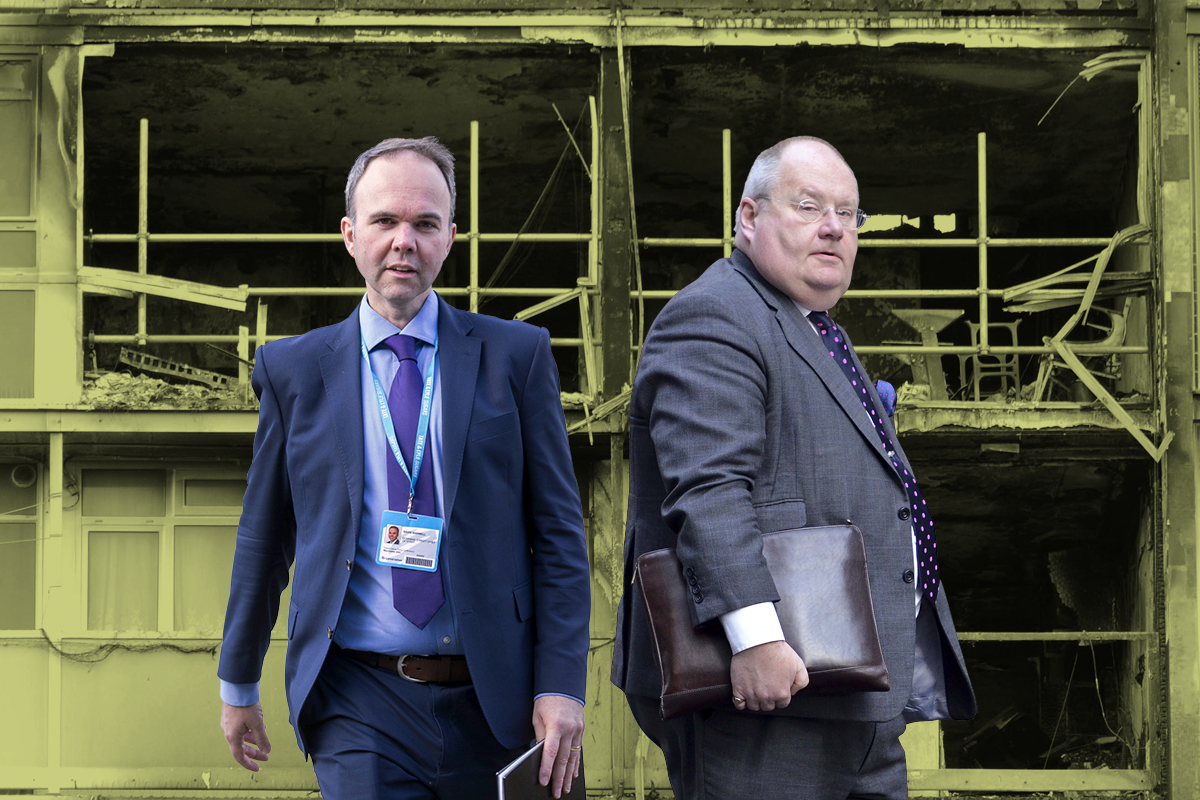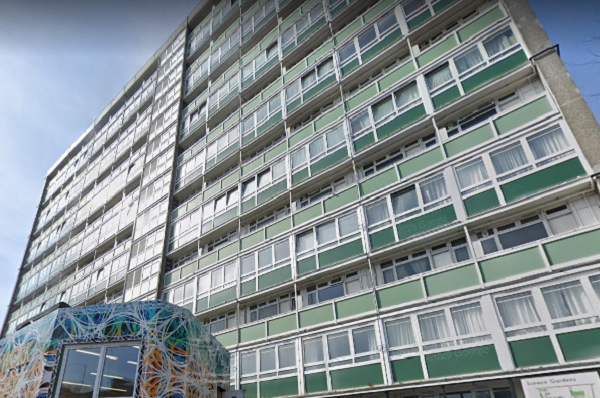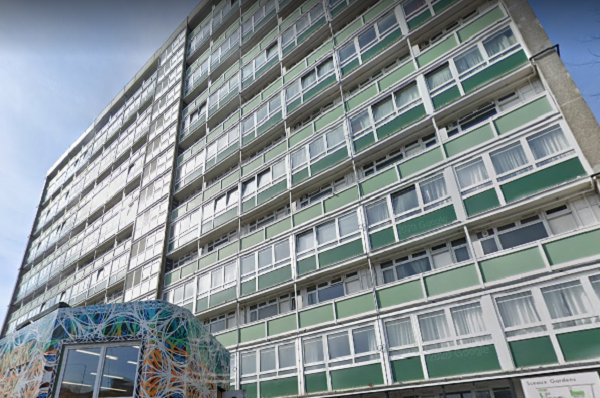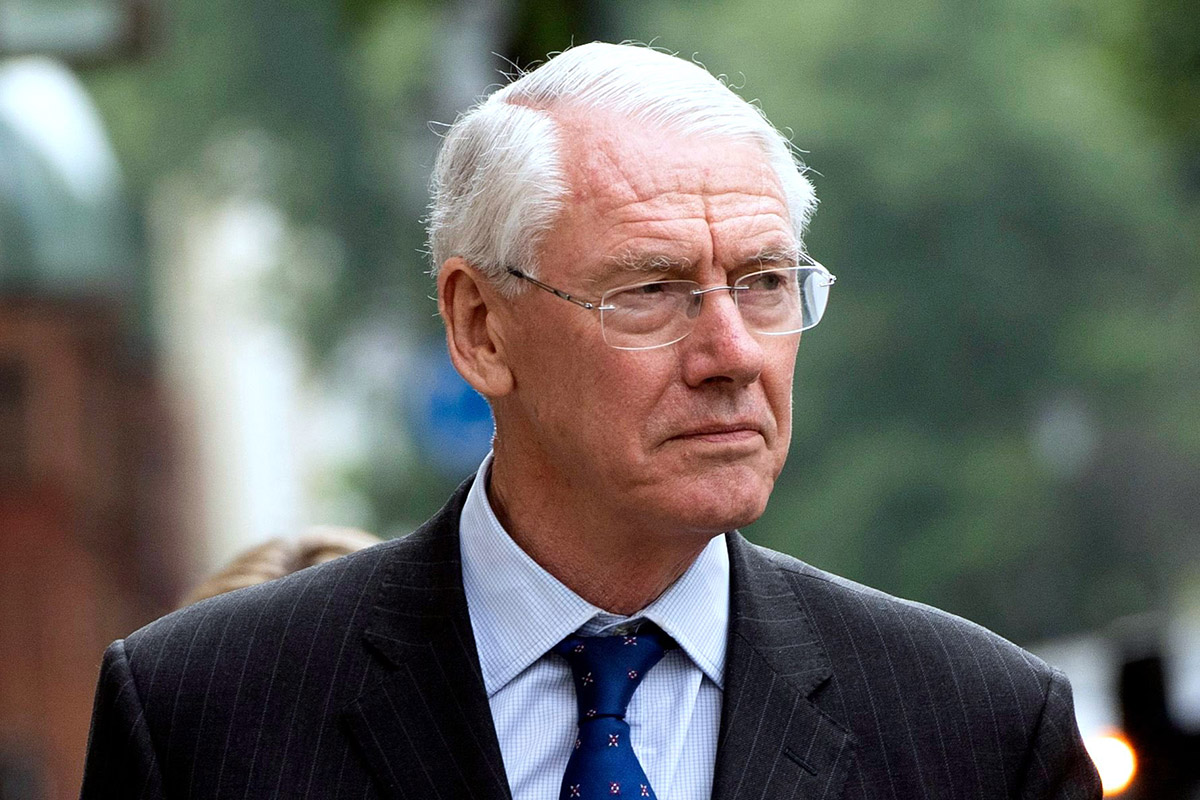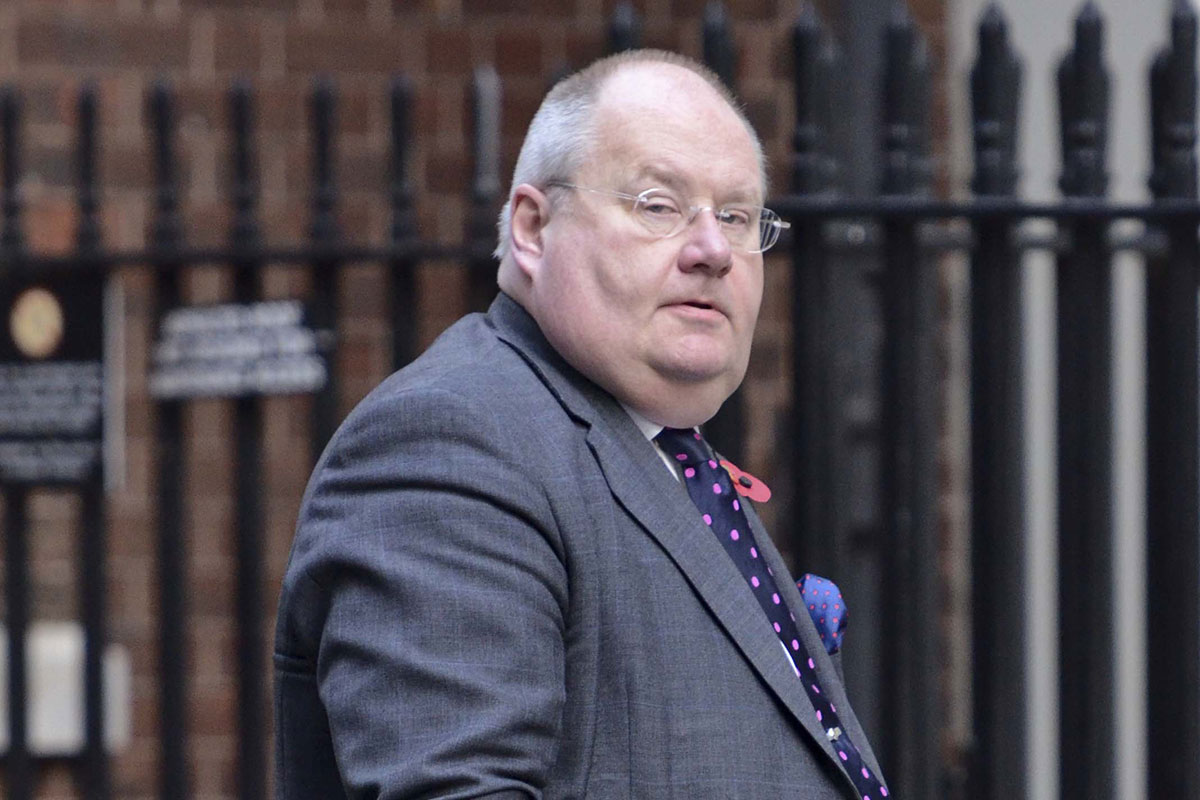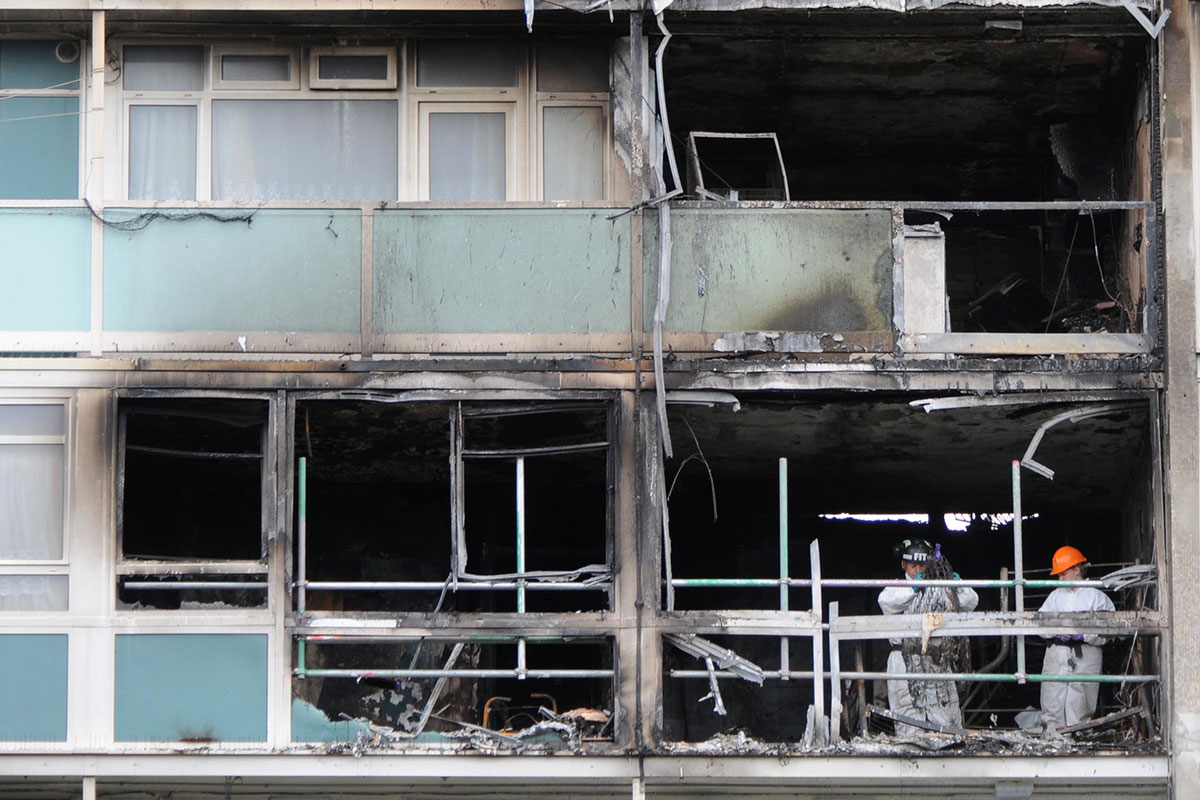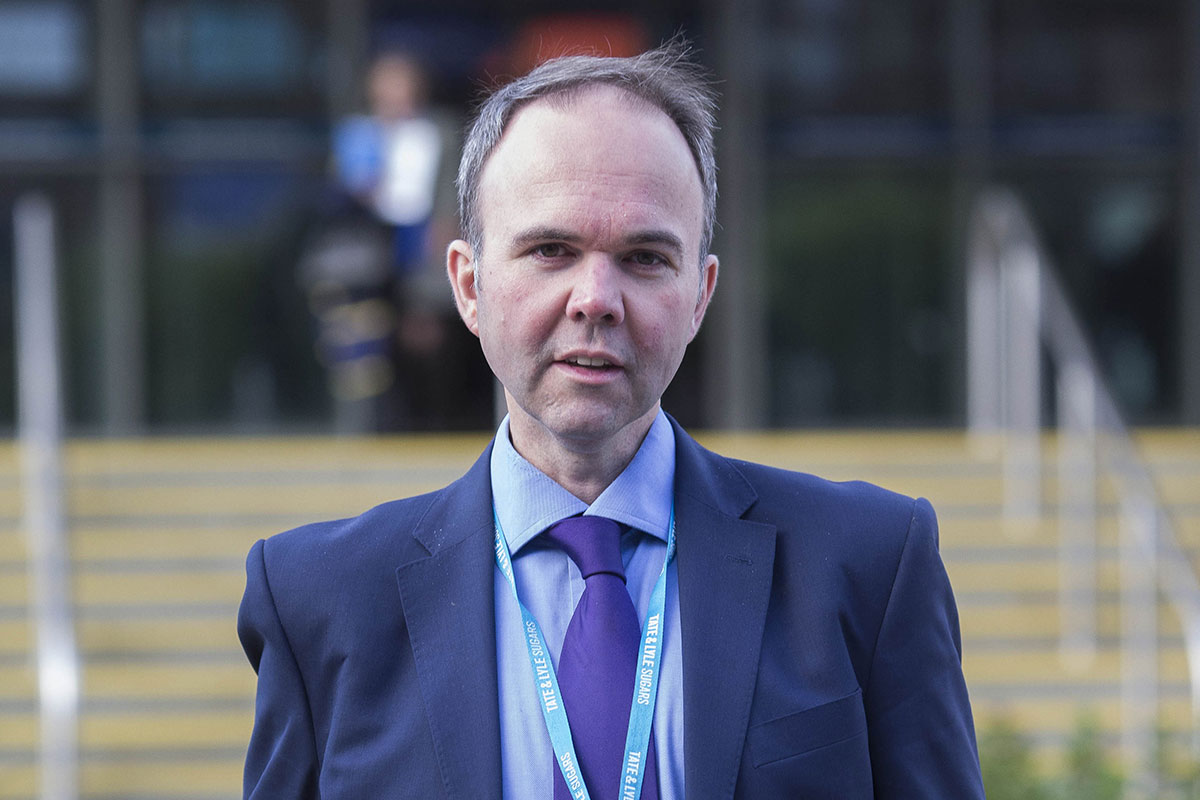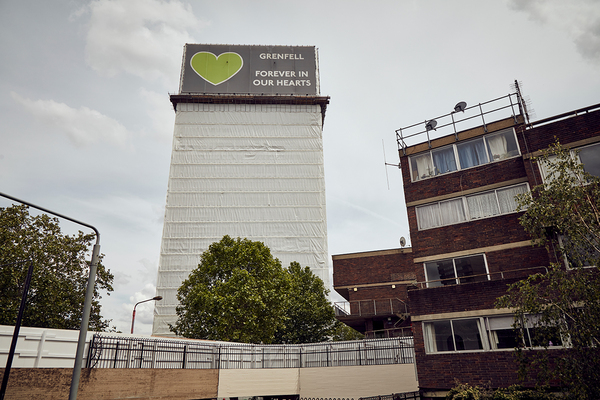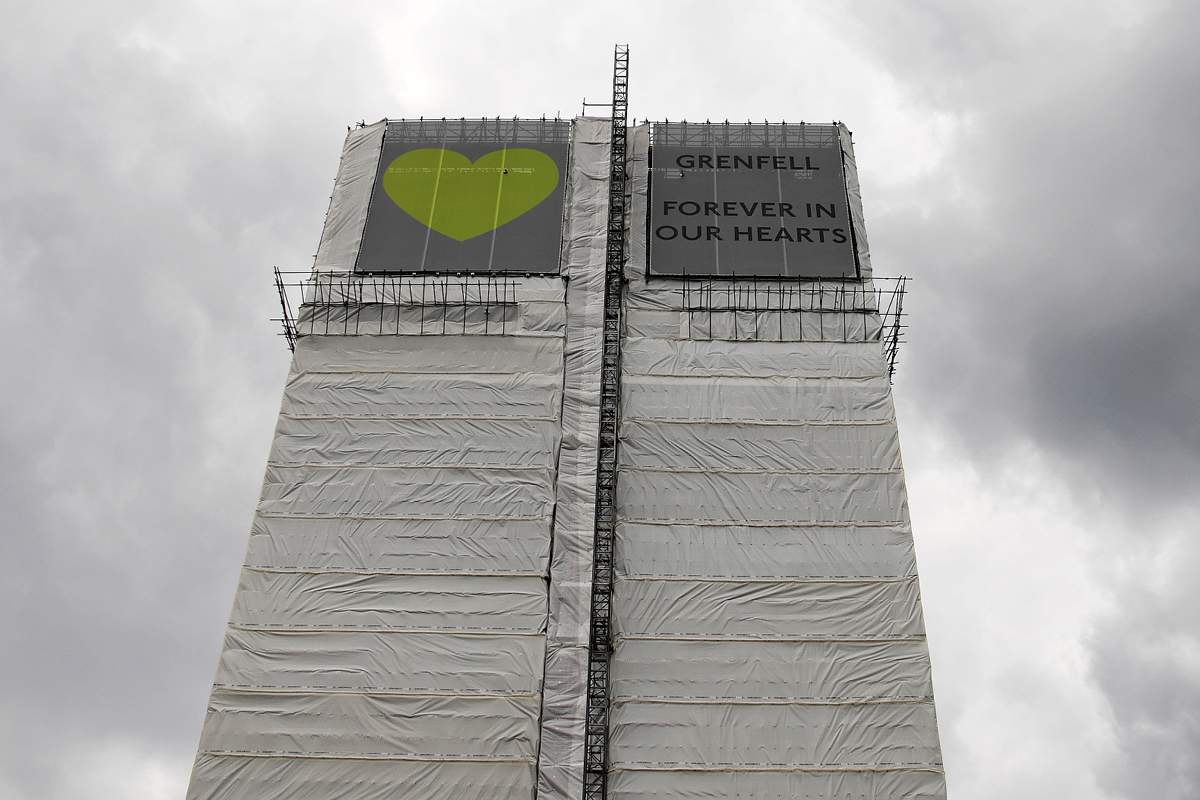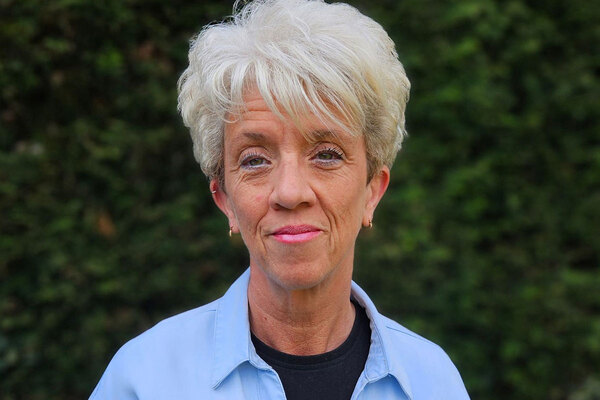Special investigation – The lost lessons of Lakanal: how politicians missed the chance to stop Grenfell
On the 10th anniversary of the fatal Lakanal House fire, here again is our in-depth piece by Pete Apps revealing how warnings from the tragedy were not heeded. Photography: Rex Features, Jon Enoch
Inside Housing Spotlight is a series of pieces showcasing the best of our investigative and data journalism.
The below piece was originally published on 13 June.
Catherine Hickman lived immediately above the source of the fire. The 31-year-old fashion designer, who had previously raised concerns about fire safety in the council-owned block, called 999 about six minutes after the fire broke out.
She told the operator that smoke was entering her flat, but was nevertheless told to stay put and await rescue.
The emergency services assumed that she would be safe in her home – they did not expect the flames to spread from the flat below.
But what they did not know was that the tower block had recently been refurbished, and combustible panels had been added to the outside of the old building.
The fire burst out of the window of the flat where it started, lit the combustible panel, buckled Ms Hickman’s window, set fire to her curtains and spread through her home. All the while, she was told to stay in the property and await rescue.
She endured a terrifying 40 minutes on the phone to the emergency services before she stopped responding and died.
The fire went on to trap and kill her neighbours, as major flaws allowed flames to rip through the building.
In the aftermath of the fire, Inside Housing’s front page carried an image of the burned-out block and the words “Never again”. Politicians and industry leaders promised to learn the lessons necessary to prevent a future tragedy. A major public inquest was convened.
Ms Hickman’s story sounds familiar. Some of you may have assumed that she died in Grenfell Tower. But she did not. In fact, she and five of her neighbours were killed eight years before and six miles away from Grenfell on the other side of the Thames at a block called Lakanal House.
That this tragedy was repeated less than a decade later and on a scale previously unimagined must be considered one of the greatest public policy failures anywhere in the modern world. Today, Inside Housing reveals the untold story of how it happened.
There were six victims at the Lakanal fire. Alongside Ms Hickman were Dayana Francisquini, 26, and her children Thais, 6, and Felipe, 3; and Helen Udoaka, 34, and her daughter Michelle, who was just 20 days old.
Ms Hickman died in her flat after flames spread up the outside of the building via the high-pressure laminate window panels. The other five victims all died in Ms Francisquini’s home, where Ms Udoaka had fled with Michelle.
Smoke entered the flat through the ventilation ducts, which carried it up from lower floors, and through various other breaches that allowed it in from the corridor, including a defective fire door with no smoke seals.
A major, jury-led inquest into the tragedy was held in 2013. After 50 harrowing days of evidence, the jurors returned narrative verdicts for all six victims.
Listen to an audio version of this story here:
The coroner, Judge Frances Kirkham, then sent a series of letters to public bodies containing recommendations “to prevent further death”. This included a letter to the government – specifically to the Department for Communities and Local Government (DCLG), which was responsible for housing and building regulations and led by Eric Pickles.
Over the course of the inquest, the coroner had heard evidence that sprinklers could have put out the fire and saved lives. So she told Mr Pickles to “encourage providers of housing in high-rise residential buildings… to consider the retrofit of sprinkler systems”.
She had also heard days of dense and confusing evidence about the necessary fire rating for the window panels that had helped the flames rip up the outside of the tower.
The required legal standard for the panels was a rating known as ‘Class 0’. This standard mainly considers the spread of flames over the surface of a material. Dangerous composite materials can meet the standard if they have a non-flammable surface, like aluminium, despite containing highly flammable plastics.
“Even if the composite panels were Class 0, they would not have prevented the spread of fire” – Lakanal House inquest jury verdict
When Lakanal House was built in the 1950s, building standards were stricter: the walls of buildings had to provide one hour’s fire resistance and combustible materials were effectively banned. But when the building was refurbished under the Decent Homes Programme in 2007, the applicable standard was the lower Class 0.
The jury had found that the panels, made by Trespa, did not meet even this Class 0 standard. But there was an important line in their verdict that suggested they did not think Class 0 was tough enough anyway: “Even if the composite panels were Class 0, they would not have prevented the spread of fire from flat 65 [where it started] to flat 79 [where Ms Hickman died].”
When Ms Kirkham wrote to the government, she told it to review the official guidance “with particular regard to the spread of fire over the external envelope of the building”.
Given this recommendation and the jury’s comments, it is fair to say that the government should have urgently looked at whether Class 0 was appropriate.
Mr Pickles (above) replied to the coroner’s letter on 20 May 2013. In his response, he said he had recently written to social housing providers about sprinklers. He said new official building guidance would be published by 2016/17. And he assured the coroner of his “commitment to ensuring that the safety of residents in high-rise buildings continues to be a priority”.
And that was that.
But in the years that followed, there was no review of building regulations and neither pressure nor funding were applied to require the retrofitting of sprinklers.
When Grenfell burned, the official guidance on building regulations was the same as it was in 2013. The cladding wrapped around the outside of the tower was certified to Class 0.
And there were no sprinklers to be found anywhere in the tower. In fact, fewer than 1% of social housing towers had sprinklers inside flats, according to Inside Housing research in 2015.
To understand why so little had changed, we need to take a look at the political forces that defined those crucial years.
In January 2012, prime minister David Cameron spoke to a small audience of business leaders in Maidenhead. He announced that the government was “waging war against the excessive health and safety culture that has become an albatross around the neck of British businesses”.
“This coalition has a clear New Year’s resolution: to kill off the health and safety culture for good,” he said.
To that end, he introduced a new rule: one in, two out. This meant that for every new regulation introduced, two had to be stripped from the statute book. In practice, this was measured financially: civil servants first assessed the cost to business of any new regulation and then had to remove rules that would cover twice that cost.
“This coalition has a clear New Year’s resolution: to kill off the health and safety culture for good” – former prime minister David Cameron
A former senior civil servant has told Inside Housing that the rule made it “almost impossible” for officials to introduce new regulations that would place significant costs on industry – such as sprinklers.
Mr Cameron’s approach was not new. It built on a one in, one out rule introduced by Tony Blair’s government, which itself built on the deregulation and privatisation agenda of Margaret Thatcher.
It is evident that his new resolution was instrumental in the failure to introduce sprinklers in the aftermath of Lakanal.
In 2014, housing minister Brandon Lewis was asked in parliament why he would not make sprinklers mandatory. He said: “In our commitment to be the first government to reduce regulation, we have introduced the ‘one in, two out’ rule for regulation.
“The Department for Communities and Local Government [responsible for housing] has gone further and removed an even higher proportion of regulations. In that context, members will understand why we want to exhaust all non-regulatory options before we introduce new regulations.”
When Wales introduced mandatory sprinklers in new builds in 2013, Eric Pickles wrote a letter to the Welsh government accusing it of being “over-zealous” and adding £13,000 to the cost of building new homes.
“It is a matter of fact that the Welsh government is increasing the cumulative burden on regulation in the housing market in Wales… By contrast, the coalition government in England is removing excessive and unnecessary regulations,” he wrote. The letter was sent on 23 May 2013 – just three days after he had replied to the Lakanal House coroner.
“There was a deregulation focus that cut right across everything that was going on in the department” – source with knowledge of the DCLG at the time
One source with knowledge of the DCLG at this time suggests that the department was particularly intent on removing regulations – even for a government already obsessed with “cutting red tape”.
“There was a deregulation focus that cut right across everything that was going on in the department,” the source says. “It would have been very difficult for officials to suggest new regulations, because of what was going on in the department and the mood music.”
Multiple sources have told Inside Housing that when they lobbied the government to introduce tougher rules during this period, the main counter-argument they encountered was that the annual number of deaths from fire was falling, so more stringent regulations were unnecessary.
David Sugden, then chair of the Passive Fire Protection Federation (PFPF), had issued several warnings about fire safety, but said: “The number of deaths in fires had been coming down very nicely. The [Cabinet Office] could not be convinced that there was sufficient danger to the public for major changes in regulation.”
Arnold Tarling, a chartered surveyor and fire safety expert, specifically warned ministers about the risk from fires involving aluminium composite material – the material used on Grenfell Tower. He recalls: “Their argument was that year-on-year the number of people dying in fires is falling and therefore buildings are safe.
“And then when you would say, ‘yes but we are not building like we used to, we are covering them with all these combustible materials that would go up like a horror movie’, they would say ‘well it hasn’t happened yet’.”
It is true that the number of deaths from fire had more than halved since the early 1980s. But this was never about regulation: the government’s own analysis put this down to factors such as reductions in smoking and the use of chip pans, as well as an increase in the use of smoke alarms.
And the warnings did not only come from people like Mr Tarling and Mr Sugden. They also came from inside the Houses of Parliament. Inside Housing has obtained a cache of letters that shed new light on the extent to which they were ignored.
Above: the aftermath of the Lakanal House fire
Within Westminster, the only body that seems to have taken serious notice of the coroner’s findings at Lakanal House was the All-Party Parliamentary Fire Safety & Rescue Group (APPG), chaired by Conservative MP Sir David Amess
Shortly after the Grenfell Tower fire, the BBC’s Panorama obtained letters from the group that showed it had called on four ministers – Eric Pickles, Stephen Williams, James Wharton and Gavin Barwell – to carry out the review of regulations recommended by the coroner and push harder for the retrofitting of sprinklers.
But Inside Housing has seen documents and obtained a number of previously unreleased letters that show these warnings were much more frequent and specific than had been previously realised.
Between 2014 and 2017, the APPG wrote to ministers no fewer than 21 times, calling for action to be taken to implement the findings of the Lakanal House review.
The MPs were particularly concerned that the rejection of the use of sprinklers was based on research carried out in 2005, which had since been superseded by new research in 2012 suggesting sprinklers were now far more cost-effective.
They were also concerned about the slow pace at which guidance was being reviewed following the Lakanal House inquest.
In particular, they wanted the Class 0 standard replaced with a higher category of fire resistance for materials on the outside of walls. They said this could be dealt with immediately by “simple amendments” to official guidance, rather than waiting for the full review due in 2016/17.
But these messages were not received well by ministers - who would frequently reply to lengthy letters with a brief two or three paragraph response.
On 9 September 2014, following several letters urging him to act, the minister then in charge of building regulations, Stephen Williams, wrote: “I have neither seen nor heard anything that would suggest consideration of these specific potential changes is urgent and I am not willing to disrupt the work of this department by asking that these matters be brought forward.”
Sir David responded in a letter that Inside Housing has obtained, in which he said he was “at a loss to understand how you had concluded that credible and independent evidence which had life safety implications was not considered to be urgent”.
He added: “As a consequence, the group wishes to point out to you that should a major fire tragedy with loss of life occur between now and 2017 in, for example, a residential care facility or a purpose-built block of flats, where the matters raised here were found to be contributory to the outcome, then the group would be bound to bring this to others’ attention.”
The group never received a reply to this letter.
“I have neither seen nor heard anything that would suggest consideration of these specific potential changes is urgent and I am not willing to disrupt the work of this department by asking that these matters be brought forward” – Stephen Williams, minister in charge of building regulations at the time
It picked up the conversation with Mr Williams’ successor, James Wharton, in 2015, after Mr Williams lost his seat in the 2015 general election.
But it continued to hit a brick wall, with Mr Wharton at one stage citing the government’s desire to “reduce the burden of red tape” in his refusal to act.
During this time, the warnings over fire safety continued to mount: the death of 23-year-old architect Sophie Rosser at a fire in Canary Wharf, and the resulting inquest in 2014; the destruction of 15 homes in a devastating blaze on the Tannery complex in Canterbury in 2015; an arson-related fire at a tower block in Westcliff-on-Sea in Essex that killed a pregnant woman. All these incidents were raised with officials, but none of them were enough to stir the government into action.
And it was not just the APPG issuing warnings. Inside Housing revealed last year how DCLG officials were specifically told at a meeting in 2014 that combustible aluminium composite material cladding of the exact kind used at Grenfell was being installed on high rises because of the Class 0 requirement in building guidance.
In this case, the minutes say that officials agreed to add a ‘frequently asked question’ to the website where the documents were stored, making it clear that this type of cladding was banned. But this was never done.
In addition another coroner’s inquest – this time investigating the death of 23-year-old Emma Waring in a housing association property – also wrote to the department advising the installation of sprinklers in September 2015. His letter called for “immediate and positive consideration” of the compulsory inclusion of sprinklers in residential properties.
But the government never even replied. In fact, it did not send a response until Inside Housing put in a Freedom of Information Act request asking for the response, months after Grenfell. It apologised profusely for responding 784 days after the legal deadline, but still declined to mandate sprinklers.
Despite this lack of action from ministers, the APPG persisted. And in 2016, a new minister took over the brief: a man called Gavin Barwell.
Mr Barwell (above) would later go on to become Theresa May’s chief of staff – a position he retains to this day as she prepares to leave office, putting him in a position of political authority as the response to Grenfell has played out.
The group first contacted him on 12 September 2016, inviting him to lunch and sending a copy of the correspondence with Mr Wharton.
It noted that the post-Lakanal review was promised “shortly” in November 2015 but had still not taken place. “Regrettably, we have yet to receive any announcement on this, which is of such importance to the fire and construction sector,” the letter read. It also referred to fire that caused the death of the pregnant woman in Essex – which was in Mr Amess’ constituency.
Mr Barwell did not reply. He was sent another letter requesting a response on 17 October. Again, it was ignored.
The group persisted with a letter on 7 November, pointing out that Mr Barwell had now made a statement in the House of Commons saying the government had “publicly committed ourselves to a reviewing Part B of the building regulations”. It asked for a meeting to discuss this planned review.
The APPG finally received a reply a week later, in which Mr Barwell said that the original letter never arrived. He refused the offer of a meeting as “you had a similar meeting with my predecessor” and brushed off their concerns about the ongoing delay to the review of building regulations, saying “our intention is to make a statement in due course”.
The group replied on 22 November, referring to “the frustration which the fire and construction sector has over this matter”. Once more, it did not receive a reply.
In early 2017, the MPs decided to go over his head. In two lengthy letters to chancellor Philip Hammond in January and February, they warned that the regulations had not been reviewed for a decade and warned that “there is uncertainty as to whether a [post-Lakanal] review of building regulations is even going ahead”.
The chancellor replied, thanking the group for “bringing this issue to my attention”, but told them to keep “engaging with the lead departments” – in this case, the DCLG and Mr Barwell.
“It is now over 11 years since part B was last reviewed, and I trust that the matters... will now receive your due consideration. The group firmly believes that it is now time to get on with the promised review” – APPG
But Mr Barwell was still proving difficult to contact. The APPG wrote to him again in February, seeking a response to its letter from November requesting an update on the start of the review, and saying it was “extremely concerned” that the residents’ association from the block in Southend had not received a response.
Mr Barwell replied on 5 April, finally agreeing to meet the group – some seven months on from their first letter. He accepted that it was “clearly unacceptable” that two previous letters had been “lost in transit”.
The group responded on 18 April. By now, they were so frustrated with the minister’s failure to respond that they had resolved to contact him by recorded delivery. Since the previous letter, there had been a fire in a care home with no sprinklers, which killed three residents.
“It is now over 11 years since part B was last reviewed, and I trust that the matters... will now receive your due consideration,” the group wrote. “The group firmly believes that it is now time to get on with the promised review.”
More letters were exchanged without Mr Barwell making any commitments for a review. He did finally address the fire in Southend on 2 May, brushing off concern by saying: “Each flat is designed to prevent fire spreading to adjacent flats… experience of this approach to fire safety over many years has showed this to be an effective strategy.”
But this ignored the six deaths at Lakanal and the warning from the coroner that action was necessary to prevent it happening again.
Perhaps the group would have been able to explain this to Mr Barwell at their meeting. But now it was too late. After the group’s last letter on 19 May, once again calling on him to write to the Southend residents, prime minister Theresa May called a snap election and the meeting was cancelled. Mr Barwell would go on to lose his seat.
A week later, a fridge would catch fire in west London. The fire it started would ignite cladding that had been attached to the building in the years that ministers had been prevaricating. It had a Class 0 rating.
As the flames spread, no sprinklers were present to stop the spread of the flames as they tore around the tower. The lives of 72 Londoners were avoidably lost.
But this is not the end of the story about the missed warnings from Lakanal. A further document obtained by Inside Housing proves that they were heard and ignored by the very body responsible for the management of Grenfell itself.
On 2 May 2013, the operations committee of Kensington and Chelsea Tenant Management Organisation (KCTMO) gathered for a meeting. KCTMO was the company that managed the 9,000 council homes in Kensington and Chelsea on behalf of the council. These homes included Grenfell Tower.
The meeting was held a few weeks after Ms Kirkham had sent her letter to the DCLG. Janice Wray, then health and safety manager at KCTMO, prepared a report on the findings, but this was never previously made public. Inside Housing has obtained a copy.
This report reveals that KCTMO was aware of Ms Kirkham’s recommendations. It lists them in some detail, including the points about encouraging the retrofitting of sprinklers and new guidance relating to the spread of fire over “the external envelope of a building”.
The report says: “If these recommendations were to be implemented – generally, this would only be possible after a change in legislation – they would have a significant impact on all landlords with responsibility for high-rise blocks.”
It goes on to note that a further fatal flat fire (at Shirley Towers in Southampton) also led to advice to social landlords to encourage the retrofitting of sprinklers in blocks higher than 30m. However, the report goes on to say that “initial indications from [D]CLG are that these recommendations are unlikely to be taken up” and that officials have said that the recommendations “will not become mandatory”.
This report was written 18 days before Mr Pickles sent his response to the coroner and suggests that officials were quietly indicating to social housing providers that it was acceptable to ignore the coroner’s findings.
This is especially troubling, given the timing. The meeting notes make clear that this was before the refurbishment of Grenfell had begun.
“These measures would have prevented Grenfell,” adds Mr Tarling. “But this document shows they got a nod from Mr Pickles that they didn’t have to do anything, and so why spend the money?” The chance was missed.
In response to the documents revealed in this article, a spokesperson for the Ministry for Housing, Communities and Local Government - as it is now known - insists the government “took action” on the coroner’s findings.
In a sign of how little has changed since Grenfell, the spokesperson adds that government still “believes an appropriate level of fire safety can be achieved without the need to retrofit sprinklers”.
On the failure to review the guidance, they add it was “underway but had not been completed” by the time of the Grenfell fire.
In fact, the spokesperson goes on to say that the long awaited review of Approved Document B - now six years on from the coroner's recommendation - remains underway and incomplete. The government has now, finally completed a consultation on changes. The spokesperson adds, without irony, that it will publish its response “in due course”.
And sadly, two years on from Grenfell, these are not the only echoes of the failure to act on the lessons of Lakanal.
The government remains reluctant to enforce the retrofitting of sprinklers. A letter leaked to Inside Housing in September 2017 shows that the government refused to provide funding for Nottingham Council’s retrofitting programme, with then housing minister Alok Sharma describing sprinklers as “additional, not essential”.
Research by the Labour Party in November last year revealed that just 4% of council-owned tower blocks in London are fitted with the life-saving devices.
With regard to the use of Class 0 combustible materials on high rises, the government’s approach was not to explain why the warnings had been missed, but to deny that is what the guidance said. Philip Hammond went on television just days after the fire to claim that the guidance should instead have been interpreted to require the use of materials of “limited combustibility”.
But this interpretation is widely disputed. It also does little to explain why hundreds, perhaps thousands, of buildings have Class 0-rated cladding on their walls.
Last year, ministers did belatedly act to ban the use of combustible cladding and insulation on new builds.
But this was only done following powerful lobbying by survivors of Grenfell, which called for a rejection of an official review that had advised doing the opposite, and nothing has yet been done to make this law retrospective.
While aluminium composite material cladding is being removed from high rises, an estimated 1,700 buildings have other forms of dangerous materials – including many with the high-pressure laminate panels present on Lakanal House.
What happened after Lakanal proves the danger of such a slow response. The next disaster will not wait until politics is ready for it.
End Our Cladding Scandal: campaign aims
- Government provides a fund to cover the cost of cladding removal and remedial works on private blocks
- A firm timescale is set out of no more than two years for the work to be carried out
- Residents are reimbursed for the interim fire safety costs incurred, and funding is to be provided for necessary internal fire safety measures identified by a competent fire risk assessor
- Martin Hilditch, editor, Inside Housing
- Manchester Cladiators
- UK Cladding Action Group
- Natasha Elcock, chair, Grenfell United
- Sadiq Khan, mayor of London
- Kate Henderson, chief executive, National Housing Federation
- Terrie Alafat, chief executive, Chartered Institute of Housing
- Andy Burnham, Mayor of Greater Manchester
- Lord Gary Porter, chair of the Local Government Association
- Polly Neate, chief executive, Shelter
- Jane Duncan, chair of the expert advisory group on fire safety, RIBA
- Andy Dark, assistant general secretary of the Fire Brigades Union
- Christina McAnea, assistant general secretary, UNISON
- Sir Peter Bottomley, Conservative MP and chair of the All-Party Parliamentary Group on Leasehold and Commonhold Reform
- Jim Fitzpatrick, Labour MP, and member of All-Party Parliamentary Group on Leasehold and Commonhold Reform
- Mark Amesbury, shadow employment minister and Labour MP for Weaver Vale
- Emma Dent Coad, former Labour MP for North Kensington
- Lucy Powell, Labour MP for Manchester Central
- Rushanara Ali, Labour MP for Bethnal Green and Bow
- George Howarth, Labour MP for Knowsley
- Graham Stringer, Labour MP for Blackley and Broughton
- Rob Ellis, presenter, Capital FM
- John Biggs, mayor of Tower Hamlets
- Paul Dennett, mayor of Salford
- Suzanne Richards, councillor and executive member for housing and regeneration on behalf of all Manchester's Labour Councillors
- Sir Richard Leese, Labour councillor and leader Manchester City Council
- John Leech, Manchester Liberal Democrat leader on behalf of all Manchester’s Liberal Democrat councillors
- Darren Rodwell, executive member for housing at London Councils and leader of Barking and Dagenham Council
- George Clarke, TV Architect
- David Walker, bishop of Manchester
- Graham Tomlin, bishop of Kensington
- John Roberts, founder of AO.com
- Josh Beaumont, professional rugby player, Sale Sharks and resident of affected building
- Bill Beaumont, former England rugby captain
- Jeremy Dyson, co-founder of the League of Gentlemen
- Andy Moss, actor who has appeared on Channel 4’s Hollyoaks and resident
- Ross Mullan, actor who has appeared in Game of Thrones
- Get Cape Wear Cape Fly, musician
- Nour-eddine Aboudihaj, spokesperson for Justice4Grenfell
- Mike Leonard, chief executive, Building Alliance
- Kate Kendrick, founder, National Leasehold Campaign
- Martin Boyd, chair, Leasehold Knowledge Partnership
- Paula Higgins, chief executive, HomeOwners Alliance
- Mark Henderson, chief executive, Home Group
- Ben Clay, founding member of the Tenants Union
- Hilda Palmer, acting chair of the Hazards Campaign
- Susan Bright, professor of law, University of Oxford
- Gill Kernick, consultant and former Grenfell Resident
- Phil Murphy, fire safety expert and tower block resident
This list will be updated. Please email peter.apps@insidehousing.co.uk if you want to support the campaign
Inside Housing Spotlight
Inside Housing Spotlight is a series of pieces showcasing the best of our investigative and data journalism.
Spotlight pieces:
14 December 2018: Starting to bite - how Universal Credit is making people homeless: we reveal new figures showing a clear link between Universal Credit and homelessness
9 November 2018: First Priority - the inside story of a housing association which almost went bust When a small supported housing provider entered into a series of leasing deals with investment funds, it nearly spelled disaster for its vulnerable tenants. We investigate why.
12 October 2018: The ballad of Knowsley Housing Trust the inside story of the first housing association made non-compliant by the sector's watchdog for fire safety issues
13 September 2018: How tweaked building guidance led to combustible insulation on high rises: an investigation shows how lobbyists from the plastic insulation industry supported a quiet tweak to building guidance to permit combustible insulation on tall buildings
31 August 2018: The true cost of homelessness Freedom of Information requests reveal the soaring costs of temporary accommodation
30 August 2018: The forgotten threat to high rise tenants We investigate the threat posed by combustible window panels on social housing high rises
13 June 2018: The Biggest Ever Survey of Fire Risk Assessments Data journalism revealing widespread fire safety issues in more than 1,500 tower blocks across the country
12 April 2018: A Section 106 Story An investigation into allegations of "sham transactions" involving Section 106 deals in south London
23 March 2018: The Paper Trail: The Failure of Building Regulations A lengthy investigation into the failures of building regulation that may have contributed to the Grenfell Tower disaster, and the many missed warnings
23 February 2018: The Kingspan Papers Leaked meeting notes reveal some worrying issues, including allegations of fire safety report doctoring by manufacturers
9 February 2018: Gentoo: a Sunderland story We look back at the recent history of Sunderland’s largest housing association.
25 January 2018: Homeless families face long stays in council-owned hostels we reveal how councils in London are skirting the law by using hostels to house people in temporary accommodation for more than six weeks
7 December 2017: Council house to private rent We reveal the percentage of former Right to Buy homes in the private rented sector has passed 40%
17 November 2017: Rent to buy, or rent to rent? A look at how successful the government's Rent to Buy schemes have been
7 September 2017: Once upon a time in the west The history of KCTMO in the years before the Grenfell Tower fire
11 August: 2017 Grenfell: The paper trail - our news editor Pete Apps examines seven years of council documents to tell a story of the missed opportunites to prevent the Grenfell tragedy
4 August 2017 : Knowing the risks – the most common fire safety problems in tower blocks
26 May 2017: Rents hiked for RTB replacements – Sophie Barnes reveals less than half of Right to Buy replacement homes are for social rent
12 May 2017: A stark warning – a prescient piece looking at lessons to be learned from the Shepherds Bush tower block fire
13 April 2017: Where the axe will fall – a look at plans to axe housing benefit for younger people
10 Feb 2017: Circle of Despair – the inside story of Circle's repairs and maintenance troubles
3 Feb 2017: The Benefit Cap Tightrope – Sophie Barnes unveils the first exclusive analysis of the lower benefit cap
Grenfell: two years on
Picture: Rex Features
We have published a number of articles to mark the second anniversary of the Grenfell Tower fire on 14 June:
How politicians missed the chance to stop Grenfell: A special investigation looking into the government’s failure to act on the warnings from the fatal Lakanal House fire in 2009 in time to prevent the Grenfell tragedy.
Listen here to an audio version of the article:
Barking fire shows many fire safety gaps remain two years after Grenfell: This week the second anniversary of the Grenfell Tower tragedy was marked by fire destroying another block of flats. This is why it is time to step up efforts to improve fire safety, writes Martin Hilditch.
Grenfell’s forgotten victims: life on the Lancaster West after the fire Residents of the flats surrounding Grenfell Tower have been through a housing crisis like no other – many diagnosed with PTSD as a result. Luke Barratt hears some of their stories.
Have the promises made after Grenfell been kept?: After the Grenfell Tower fire, people in power made a number of pledges. But two years on from the tragedy, have they been true to their word? Peter Apps finds out.
Grenfell management company ignored Lakanal recommendations after government said they would not be mandatory: A previously unreleased report shows that Kensington and Chelsea Tenant Management Organisation ignored advice from the Lakanal House fire coroner after Department for Communities and Local Government officials said they would “not become mandatory”.
Barking fire makes the urgent need for action only too clear: The horrific fire in Barking on Sunday is a reminder that there is much to do when it comes to residents’ safety, writes Jules Birch.
We got the Grenfell rehousing process wrong and it is time to apologies to survivors:
The rush to hit arbitrary deadlines in the rehousing process put pressure on survivors, when pressure was the last thing they needed. It’s time to say sorry, again, writes Kim Taylor-Smith, deputy leader of Kensington and Chelsea Council.
